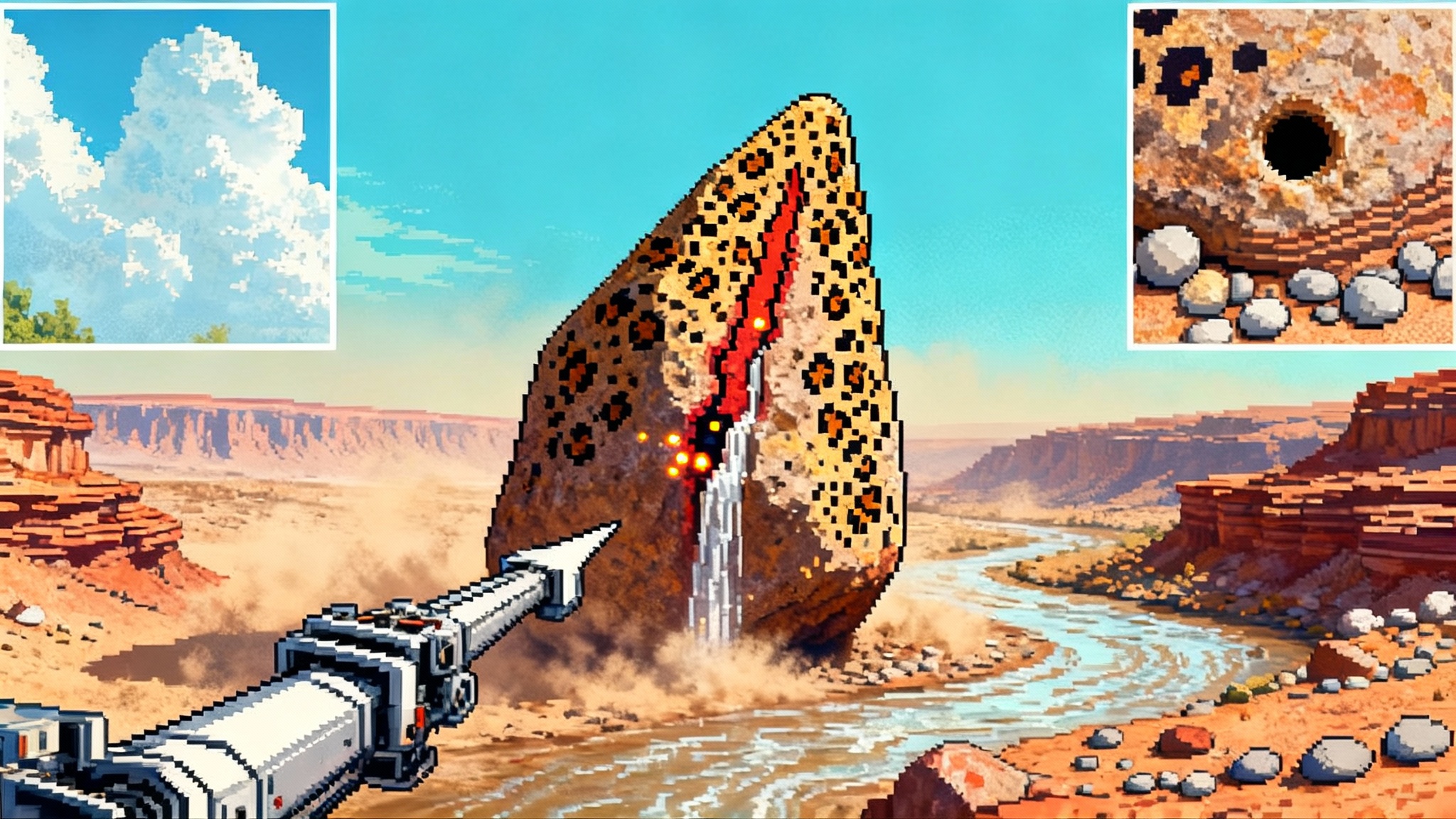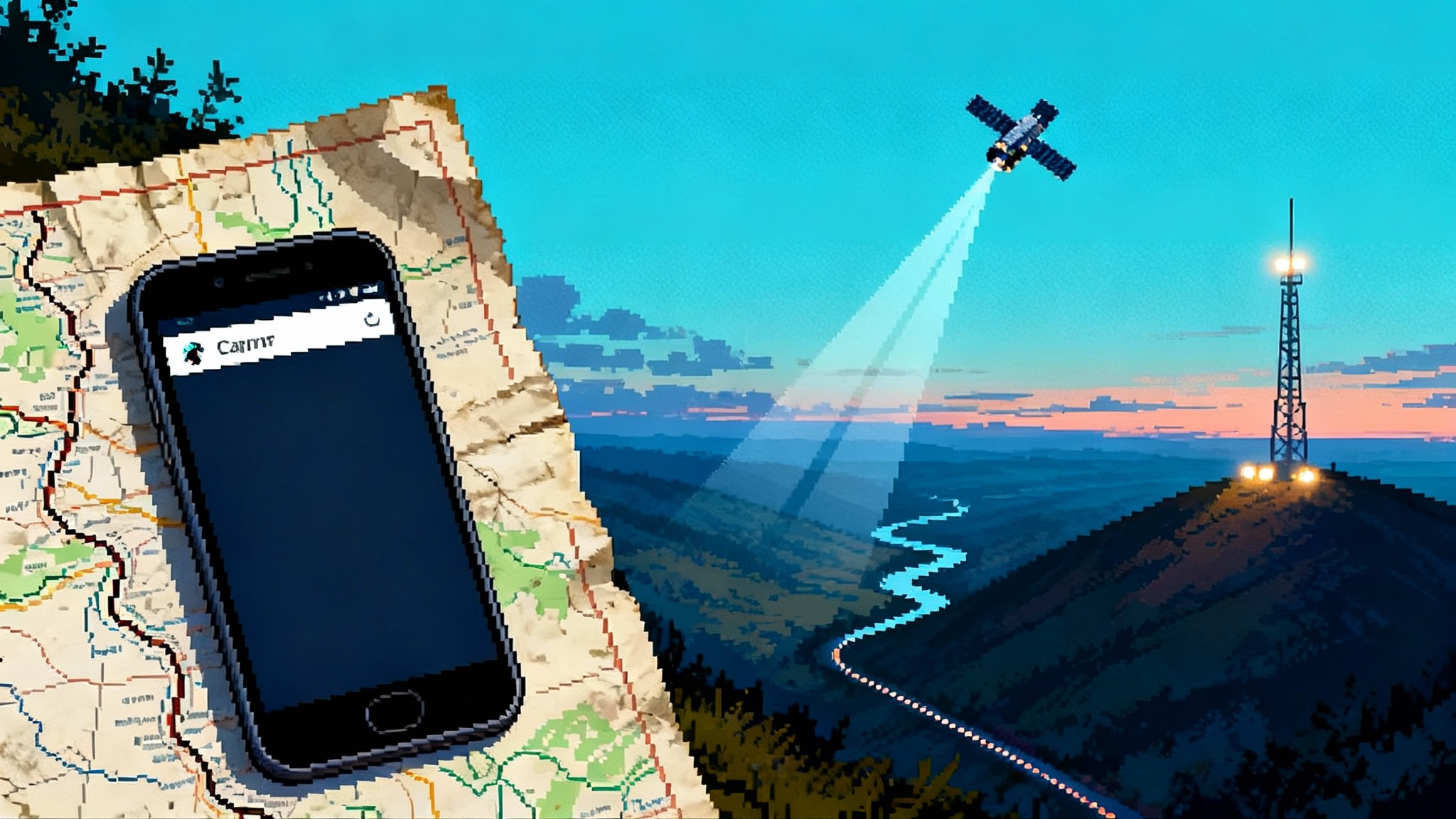Sapphire Canyon may be Perseverance’s biggest life clue
NASA says a Perseverance core called Sapphire Canyon holds a potential biosignature from a rock dubbed Cheyava Falls. We unpack what the “leopard spots” mean, how the CoLD scale works, what proof would require on Earth, and how funding could speed or stall the answer.

A rock in an ancient riverbed that changed the stakes
In July 2024, Perseverance rolled into an old river channel on the western lip of Jezero Crater and spotted a meter-long, arrowhead-shaped slab geologists nicknamed Cheyava Falls. A year later, on September 10, 2025, NASA announced that the core drilled from that slab — labeled Sapphire Canyon — contains a potential biosignature. In NASA’s careful language, that means the sample preserves chemical and textural features that may have a biological origin but are not yet proof of life. The agency highlighted the result after peer review and publication, and stressed that full confirmation requires the sample’s return to Earth. You can read NASA’s summary in its announcement of a potential biosignature.
Why this rock, and why now? Cheyava Falls sits within a formation called Bright Angel, a band of mudstones and conglomerates laid down by water flowing into Jezero’s paleolake billions of years ago. Mudstones are nature’s filing cabinets for life’s traces on Earth. They trap fine particles, shield delicate organics from radiation, and record subtle chemical gradients microbes exploit. If Mars ever supported microbes, river-lake mudstones like these are exactly where you would look.
Why Cheyava Falls is different
Cheyava Falls hosts what the team calls leopard spots and poppy seeds: millimeter-scale light patches encircled by dark halos, and tiny dark nodules sprinkled across reddish bands. The rover’s chemical mappers — PIXL for X‑rays and SHERLOC for Raman fluorescence — found that these textures are not just pretty patterns. They are reaction fronts where two minerals tend to cluster in distinct zones: vivianite, a hydrated iron phosphate, and greigite, an iron sulfide. SHERLOC also mapped organic carbon near these fronts.
That juxtaposition matters. On Earth, vivianite commonly forms in waterlogged, oxygen-poor sediments rich in phosphate and decaying organic matter. Greigite can precipitate in sulfide-rich environments and often shows up where microorganisms are cycling sulfur and iron. Put organics, iron, sulfur, and phosphorus into a mudstone, let water move through slowly at low temperatures, and redox reactions can produce exactly this mineral pair. Microbes can drive those reactions. So can purely geochemical processes, given the right ingredients.
The new peer‑reviewed study lays out the case in detail, arguing that the organics appear to have taken part in redox reactions that produced the observed iron phosphate and iron sulfide, and that these reactions occurred at low temperatures after the sediment was deposited. Read the open‑access Nature paper on redox‑driven associations for the specifics.
Leopard spots, decoded in plain language
Here is the simplest way to picture what Perseverance sees:
- The reddish band is rich in oxidized iron, like rust in a riverbed rock.
- Light patches surrounded by dark rims mark zones where the chemistry changed as fluids moved through. The light cores and dark halos are reaction fronts, like tide lines marking where a chemical wave crest stalled.
- PIXL’s mineral maps show ferrous iron phosphate in the dark halos and nodules. That is consistent with vivianite.
- Interiors of the leopard spots are enriched in iron sulfide consistent with greigite.
- SHERLOC detects organic carbon co‑located with these features. Organic carbon can come from biology or abiotic processes, but it is the right ingredient for life to harvest chemical energy from iron and sulfur.
On Earth, muds rich in decaying organic matter often accumulate vivianite as phosphate locks up with iron under reducing conditions. Greigite can crystallize where sulfate is reduced to sulfide, whether by microbes or by non‑biological reactions. Finding both minerals intertwined with organics and arranged in neat reaction fronts is what elevates Cheyava Falls above previous hints.
What “potential biosignature” actually means
Scientists avoid saying discovery of life until a signal survives a ladder of tests designed to rule out mundane causes. NASA’s Confidence of Life Detection, or CoLD, scale organizes that logic in seven steps:
- Detect a possible signal. Something stands out from background.
- Rule out contamination. Show it is not introduced by your hardware or handling.
- Establish a plausible biological mechanism in the environment. Could known metabolisms operate there?
- Rule out known non‑biological explanations as completely as possible.
- Find independent, converging evidence pointing to biology. Different instruments, different lines of evidence.
- Rule out new alternative hypotheses that arise during testing.
- Achieve independent confirmation by other teams and methods.
Cheyava Falls clearly meets step 1 and has early momentum on steps 3 and 5, because multiple instruments see consistent patterns and the geologic context fits low‑temperature aqueous chemistry. Step 2 is well underway given the rover’s cleanliness protocols and witness plates, but only sample handling on Earth can close that loop. Steps 4 through 7 are where the heavy lifting begins, and they require instruments no rover can carry.
What confirmation would require on Earth
If Sapphire Canyon lands in a terrestrial lab, scientists will look for a suite of signatures that, together, are hard to generate without biology:
- Isotopic fractionation at micron scales. NanoSIMS and related tools can measure the ratios of heavy to light isotopes in carbon, sulfur, and iron within and around the leopard spots. Biological redox reactions often leave telltale shifts in δ13C, δ34S, and δ56Fe that differ from abiotic baselines.
- Compound‑specific isotopes. Gas chromatography coupled to isotope‑ratio mass spectrometry can test whether individual organic molecules carry biological fractionation patterns or look meteoritic.
- Molecular fingerprints and chirality. High‑resolution mass spectrometry can probe for complex lipids or other macromolecules, and test whether chiral compounds show an excess of one handedness, a potential biosignature.
- Nanoscale textures. Transmission electron microscopy and focused ion beam sections can examine whether organics and minerals form microfabrics typical of biofilms or cell‑sized colonies rather than random aggregates.
- Functional groups and redox states. Synchrotron‑based spectroscopy such as STXM‑XANES can determine the chemical state of carbon and iron in place and test whether the organics look processed by metabolism.
- Low‑temperature formation constraints. Clumped isotopes and thermodynamic modeling can check if the minerals formed at temperatures compatible with life rather than hydrothermal extremes.
- Contamination accounting. Witness materials and curation blanks will be processed alongside the core to quantify any terrestrial overprint. Chain‑of‑custody and clean‑lab protocols are part of the test.
- Interlaboratory replication. Independent labs must reproduce key measurements on splits of the same core.
No single line of evidence will be sufficient. The goal is a converging case that climbs the CoLD ladder by ruling out abiotic lookalikes and showing co‑located, mutually reinforcing biosignatures in the right geologic context.
Why Mars Sample Return is pivotal
Rovers are extraordinary scouts, but they cannot match Earth’s microscopes, mass spectrometers, synchrotrons, and clean labs. Perseverance has already sealed the Sapphire Canyon core. Getting that tube to Earth is the only realistic way to move beyond a potential biosignature to a confident claim.
NASA has already said that the current, large architecture for Mars Sample Return would likely not deliver samples until around 2040, and that it is seeking lower‑cost approaches that could bring key samples back in the 2030s. Whatever architecture is chosen, Sapphire Canyon is exactly the kind of fine‑grained, organics‑bearing mudstone sample that MSR was built to target.
The credible abiotic alternatives we must beat
Before anyone claims life, the team has to show that non‑biological processes are either implausible or produce distinct signals not present here. Plausible alternatives include:
- Meteoritic or atmospheric organics. Carbon‑bearing molecules can rain onto Mars from space or form in the atmosphere and later wash into sediments. They can participate in redox reactions and generate vivianite and greigite without biology. Compound‑specific isotopes and molecular complexity tests can probe the source.
- Purely geochemical redox. Iron and sulfur cycling can proceed abiotically if the sediment is bathed in the right fluids. Modeling and lab experiments can test whether the observed sharp reaction fronts and co‑location of organics with specific minerals match abiotic patterns.
- Hydrothermal or evaporitic pathways. Vivianite and greigite can precipitate during brine evolution or mild hydrothermal alteration. Temperature proxies and fluid inclusion studies can discriminate between cool, microbially friendly conditions and hotter, sterile ones.
- Shock or diagenetic artifacts. Impacts and burial can remobilize elements and paint misleading halos. Careful petrography and cross‑cutting relationships help sort process from overprint.
The Nature study underscores that both biotic and abiotic pathways are viable on first principles. That is why sample return matters: you need the resolution and sensitivity only Earth labs can provide to falsify the neatest abiotic stories.
Timelines, forks in the road, and what could change them
- Best case. If NASA’s replan converges on a leaner architecture and funding stabilizes, a mission could return a subset of Perseverance’s cache in the mid‑to‑late 2030s. Add one to two years for curation and first‑pass analyses, and the field could reach CoLD step 5 or higher before decade’s end.
- Baseline. If the program sticks close to the large architecture NASA said would deliver returns near 2040, expect first definitive lab results in the early 2040s.
- Headwinds. Major cuts or cancellations would push any answer beyond the 2040 horizon. Perseverance’s sealed tubes are designed for the long wait, but the opportunity cost grows as teams disperse and international partners pivot.
What could accelerate the path? A trimmed architecture that limits the number of returned tubes but prioritizes the most diagnostic mudstones like Sapphire Canyon. More commercial participation where it actually reduces cost and risk. Early funding to build and staff the sample receiving facility so it is not on the critical path. A simple truth applies: clear requirements, stable budgets, and a small, empowered leadership team save years.
What could derail it? Start‑stop appropriations that force layoffs and rehiring cycles. Adding lower‑value objectives that bloat mass and complexity. Deferring the sample receiving facility until after launch. Ignoring contamination control to chase schedule, which would only produce ambiguous results.
If the biosignature is confirmed
A confirmation would be historic. It would mean life emerged twice in one solar system, in environments separated by tens of millions of kilometers yet built on similar chemistry. Astrobiology would shift from possibility to comparative study. We would ask what Martian metabolisms looked like, how they evolved, and whether they share any ancestry with Earth life.
Exploration would pivot. On Mars, teams would target more fine‑grained deltaic mudstones, evaporites that lock in fluids, and silica deposits that preserve microtextures. Beyond Mars, the case for sampling plume materials at Enceladus or fresh ice at Europa would strengthen. Exoplanet science would recalibrate its playbook for atmospheric biosignatures, knowing that life leaves mineral and isotopic fingerprints even when it does not pump oxygen into the sky.
Societally, the discovery would be galvanizing. It would justify a sustained program of sample return and push agencies to design missions that can test for isotopes and chirality in situ. It would also force serious thought about planetary protection for future human missions to sites where biosignatures persist.
If it is refuted
A clear abiotic verdict would still be a win. It would tell us which mineral‑organic associations on Mars mimic life and which do not. It would refine search strategies toward other niches, such as carbonates that record lake waters directly, or silica sinters where microtextures fossilize readily. It would also validate the caution baked into the CoLD framework and make the next positive claim stronger.
How to watch the next steps
This is a patience game with a roadmap. The rover has identified what could be the most promising Martian sample yet. A peer‑reviewed paper details the textures, the minerals, and the chemistry. The next chapter cannot be written on Mars. It has to be written in Earth labs with instruments that weigh tons and data that survive skeptical cross‑examination. That is what Mars Sample Return is for. Sapphire Canyon is waiting.






